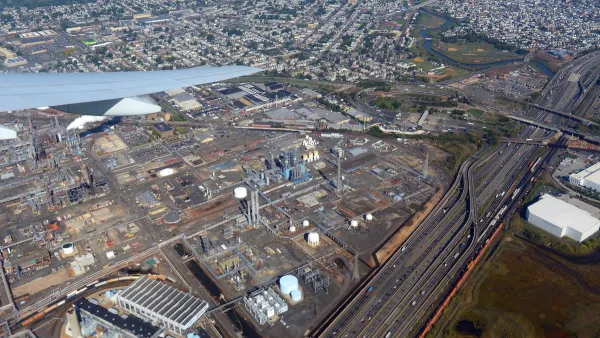NYC's recently released energy efficiency ratings are full of surprises: 1930s landmarks such as the Chrysler and Empire State Buildings outperformed later mid-century structures, as well as contemporary LEED-rated designs.
In New York City, the heating and cooling of buildings accounts for a staggering 80 percent of greenhouse gas emissions. For the last three years, the Bloomberg administration has mandated that the city's largest commercial buildings track their energy usage to help attain its goal of cutting all emissions by a third by 2030.
" has underscored the urgency of such efforts, and continuing climate change is expected to result in more severe storms and flooding," reports Mireya Navarro, adding, "[w]hile the city’s biggest commercial structures have been required to report energy use since 2010, this is the first year public disclosure has been mandated under a 2009 law that is among the first in the country to follow how buildings use energy." According to Navarro, "[b]ig residential buildings will face the same disclosure requirement next year" shedding greater light on how buildings use energy in the city that never sleeps.
Scores ranged from 3 to 84, with a median score of 68 for all commercial buildings reporting data. Navarro writes, "Older buildings tend to have higher Energy Star scores because they have thicker walls, fewer windows and less ventilation — superior 'thermal envelopes,' as a report [PDF] on the early results puts it. They are also less suited to energy-gobbling activities like computer data crunching, the downfall of some youthful but middling performers."
Though the positive performance of older buildings was astonishing to many, the less than stellar performance of LEED-rated buildings wasn't unexpected. “It’s disappointing, but at the same time, it’s not surprising because there are so many things that could be happening,” Scot Horst, senior vice president for the LEED program at the Green Building Council, said of some scores. "Poorer scores for newer and LEED-rated buildings can be attributed to the use of new building materials and techniques, as well as negligent occupant behavior such as leaving lights or computers on, and to overall building control management, which can be lax."
FULL STORY: City’s Law Tracking Energy Use Yields Some Surprise

Analysis: Cybertruck Fatality Rate Far Exceeds That of Ford Pinto
The Tesla Cybertruck was recalled seven times last year.

National Parks Layoffs Will Cause Communities to Lose Billions
Thousands of essential park workers were laid off this week, just before the busy spring break season.

Retro-silient?: America’s First “Eco-burb,” The Woodlands Turns 50
A master-planned community north of Houston offers lessons on green infrastructure and resilient design, but falls short of its founder’s lofty affordability and walkability goals.

Test News Post 1
This is a summary

Analysis: Cybertruck Fatality Rate Far Exceeds That of Ford Pinto
The Tesla Cybertruck was recalled seven times last year.

Test News Headline 46
Test for the image on the front page.
Urban Design for Planners 1: Software Tools
This six-course series explores essential urban design concepts using open source software and equips planners with the tools they need to participate fully in the urban design process.
Planning for Universal Design
Learn the tools for implementing Universal Design in planning regulations.
EMC Planning Group, Inc.
Planetizen
Planetizen
Mpact (formerly Rail~Volution)
Great Falls Development Authority, Inc.
HUDs Office of Policy Development and Research
NYU Wagner Graduate School of Public Service



























